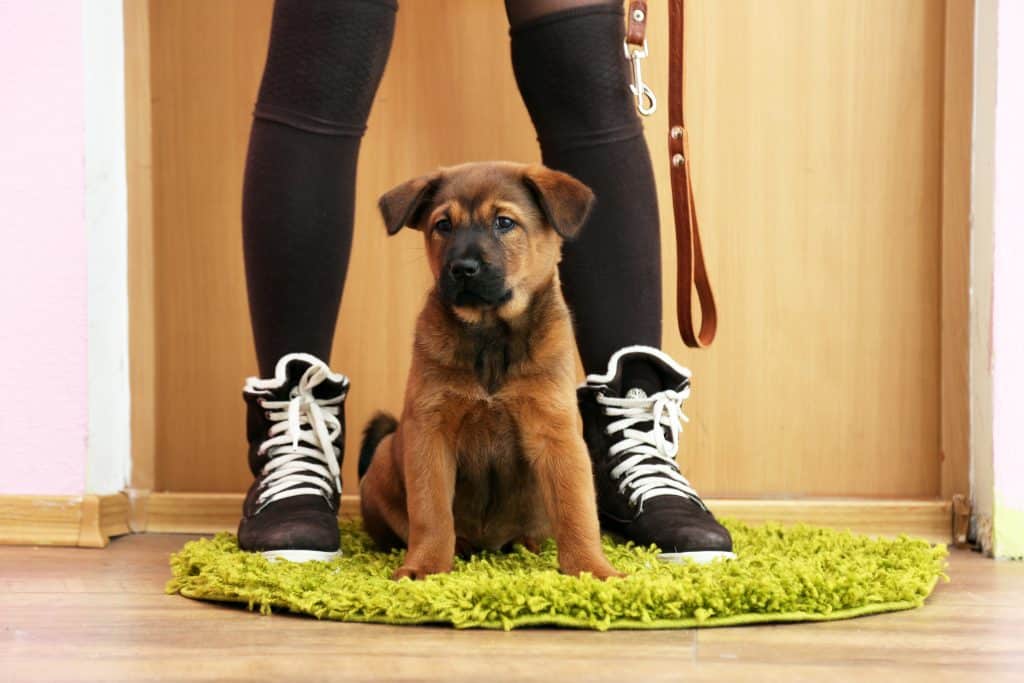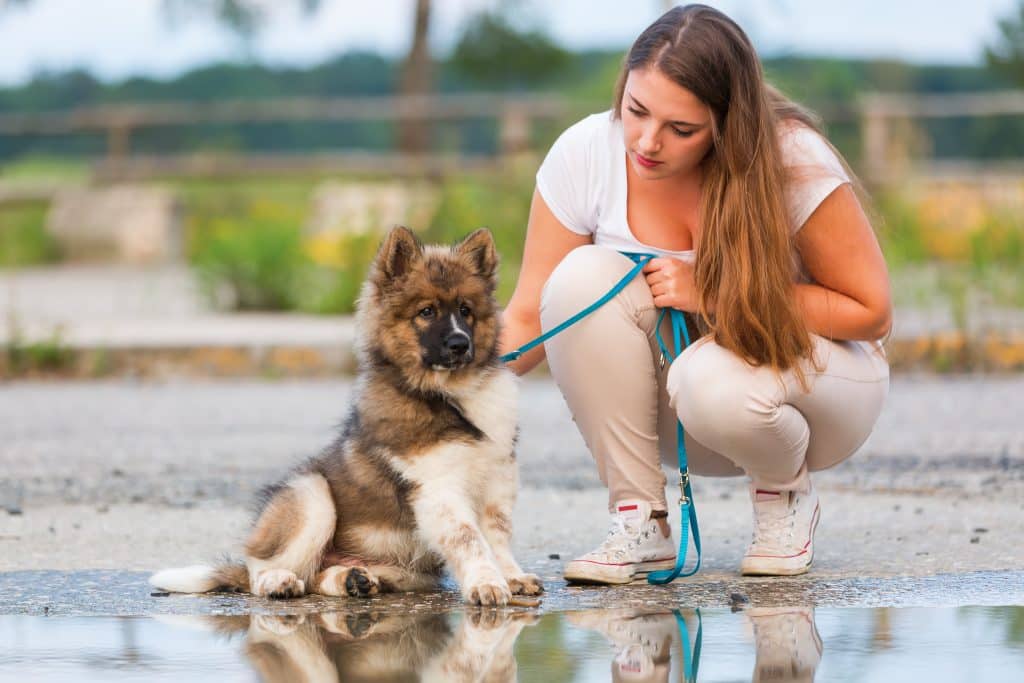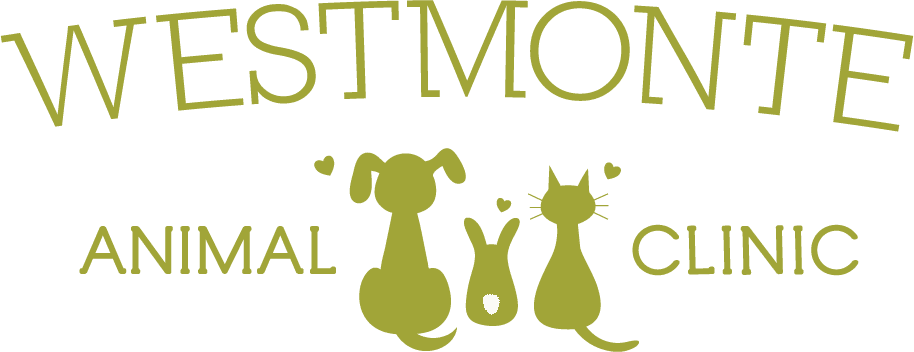
Leash Training a Puppy – Top Tips You Need To Know
Getting a new puppy is an exciting journey filled with lots of cuddles, kisses, playtime, and—inevitably—a learning curve for both you and your new best friend.
One of the most crucial skills they will learn is leash training. Leash training is so much more than just teaching your fluffy friend to walk without tugging. It’s a foundational element that helps to ensure safety, control, and a deeper bond with your pup.
Leash training is often overlooked or delayed because new owners are swept away by their new puppy’s cuteness. But the benefits to beginning early are immense. A well-trained puppy not only makes for a peaceful and enjoyable walk, but also learns that you are the alpha and they follow in your footprints.
From preventing dangerous situations, to making well visits easier, leash training is vital to the bond that you will create with your puppy. Read on for more information on how to leash train your puppy and why it’s so important.
Equipment For Leash Training Your Puppy
You can’t expect your puppy to just “know” how to walk on a leash. It’s a learned skill that takes patience, persistence, and a little knowledge of positive reinforcement.
For leash training your puppy you’ll need some basic supplies:
- Leash – Use a 6-foot leash instead of retractable leashes, which can cause injuries and also encourage the puppy to wander off.
- Harness/Collar – For young puppies we recommend a harness. This is better for their developing bodies and doesn’t tug on their neck. If you prefer a collar, you can switch to that when they’re older.
- Treats – Aim for your pup’s favorite treats, as this is better for encouragement.
- Clicker/Marker Word – A clicker is useful to get your puppy’s attention. Alternatively, a marker word (like “yes”) is useful when you want them to associate actions with a certain word.
- Patience – This goes without saying. Your puppy is new to the world and needs all the patience you can muster up.

Introduce The Leash and Harness
Your puppy is exploring their new world within your home and that can be a little overwhelming for them. Introducing the leash and harness slowly will allow them to become accustomed to the process, rather than uncomfortable or confused.
Begin by allowing the puppy to sniff the harness and reward them for doing so. Do that a few times before you put the harness on them. Don’t forget to shower them with praise and treats! It may take a few minutes for them to be comfortable walking around without scratching or chewing at it.
After they are wearing the harness with no issues, introduce the leash. Take a supervised walk around your home (allowing them to drag the leash behind them) so they get used to the feeling of something trailing behind them.
Remember, lots of praise and treats is a good foundation for showing them that wearing a harness and leash is a good thing!
Take A Walk Around The House
Next, take a walk around the house. You’ll want to do this after they’re acclimated to the harness and leash, but before you go outside (where it’s full of noises, smells, and distractions).
Take the same steps as you would outside by clicking or using your marker word (like “heel” or “come”) to get them to stand beside you. Try to pick a side (left or right) and stick with it so they don’t get confused while training. When they stand beside you, give them a treat.
Once they’re beside you, take a step forward and encourage them to walk with you. If they walk (and don’t pull you) then reward them with praise and treats.
The key thing to remember is that if the leash is tight, you don’t move. A tight leash means that your puppy is pulling, an action you don’t want to encourage. Wait for the leash to go slack, reward them, and continue moving.
Take Them Outside
So they’re used to the harness and leash and have perfected inside walking, now comes the hard part. Outside training.
The outside world is full of new people, other animals, tempting noises, and endless smells. The goal is to get your puppy tuned into you and your training so they can be upstanding canine companions.
Take the same steps as before: short walks with lots of praise and treats. Your puppy will inevitably be much more distracted outside, so it’s your job to anticipate distractions.
If your puppy is a small animal chaser and you see a squirrel, make sure that you’re prepared to distract them with a treat. If your fluff ball loves kids and there are some eager to pet him/her, make sure that you’re firm on your training. Lead your puppy to them but not if the leash is tight. Wait for some slack.
Your puppy will pull and be distracted but it’s important to remember to remain stationary until the leash has slack and then praise and reward.

Have Patience
As the saying goes, patience is a virtue. Your puppy likely came into this world only a few short weeks ago and it’s your job to raise them to be upstanding citizens. You can’t expect them to be perfect from the beginning and it will take patience and perseverance on your part to teach them properly.
They are babies and need your praise, understanding, and love above all else. If they seem too distracted or you are getting frustrated, take a break and try again another day.
Your Puppy Will Learn
Getting a puppy is such an exciting experience, but it doesn’t come with a rule book, which makes it overwhelming at times. However, leash training is an important first step that will teach your puppy to control themselves early on. A jumping puppy is cute but a jumping Great Dane is an accident waiting to happen.
Training with praise and treats goes a lot further than yanking at their leash or yelling at them. Using positive reinforcement teaches them that walking properly on a leash is not only the right thing to do, but it’s a fun time!
Leash training is vital for the safety of your pup and those around them. For any questions make sure you bring it up during your puppy’s appointments and we will be glad to help.
Services
Or call us at (407) 862-6892

